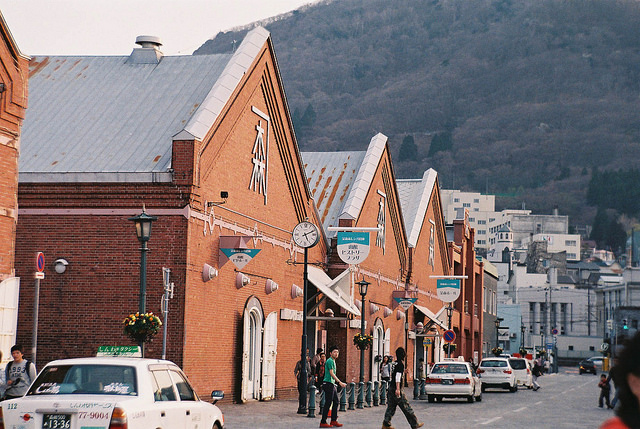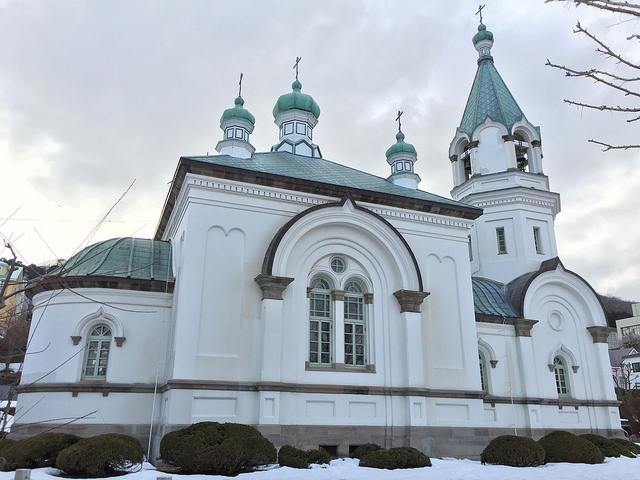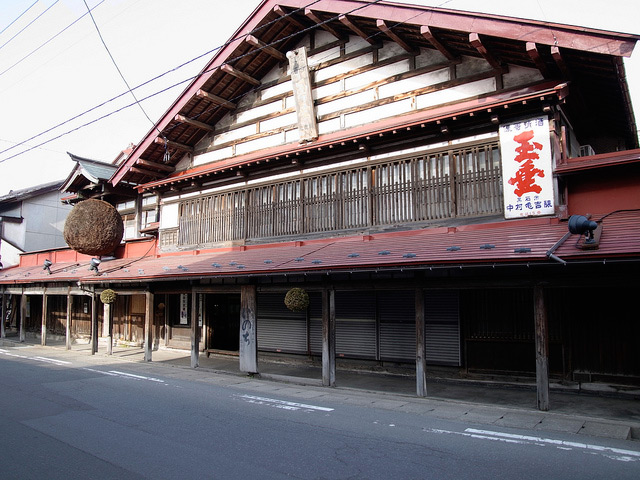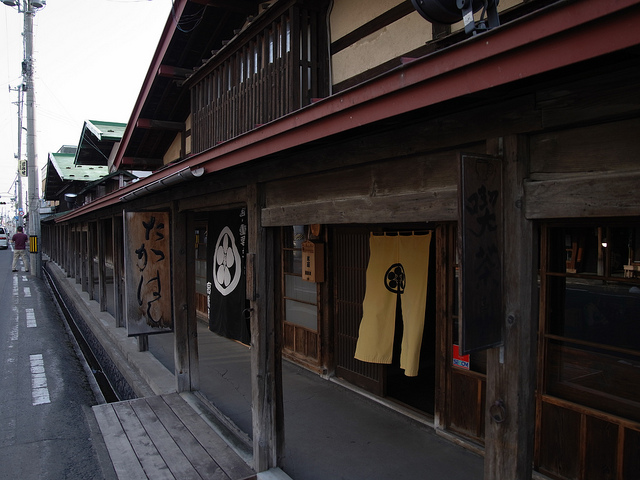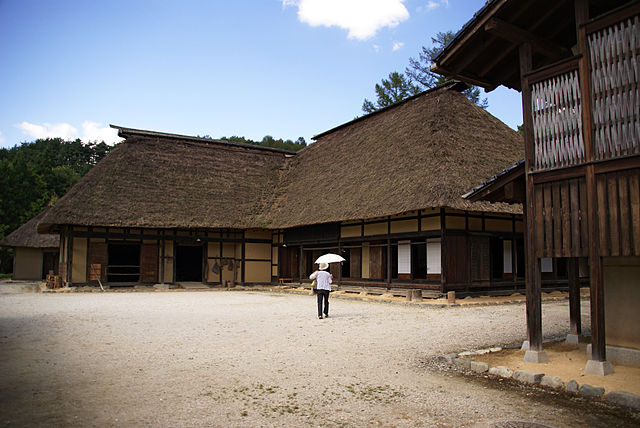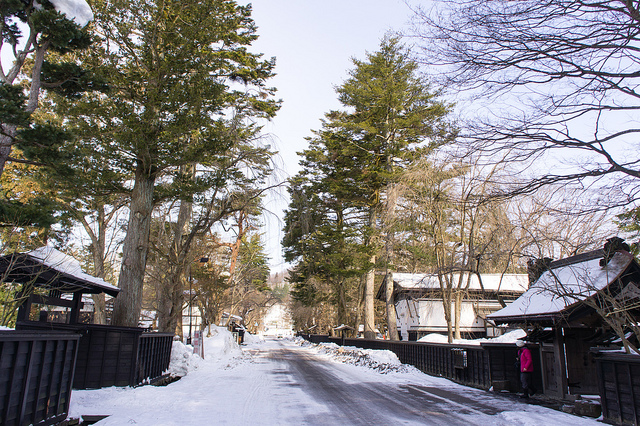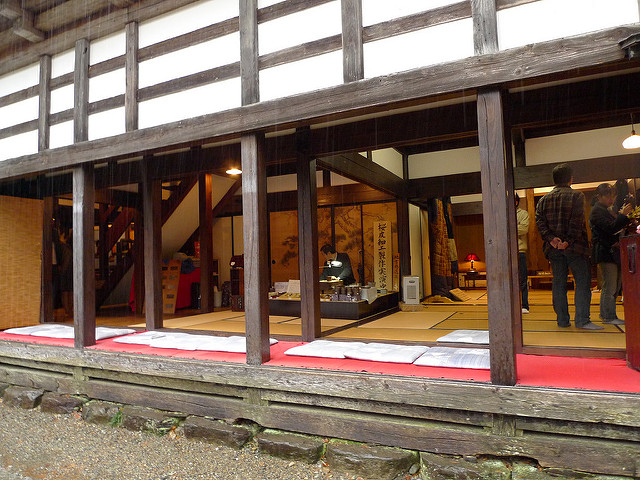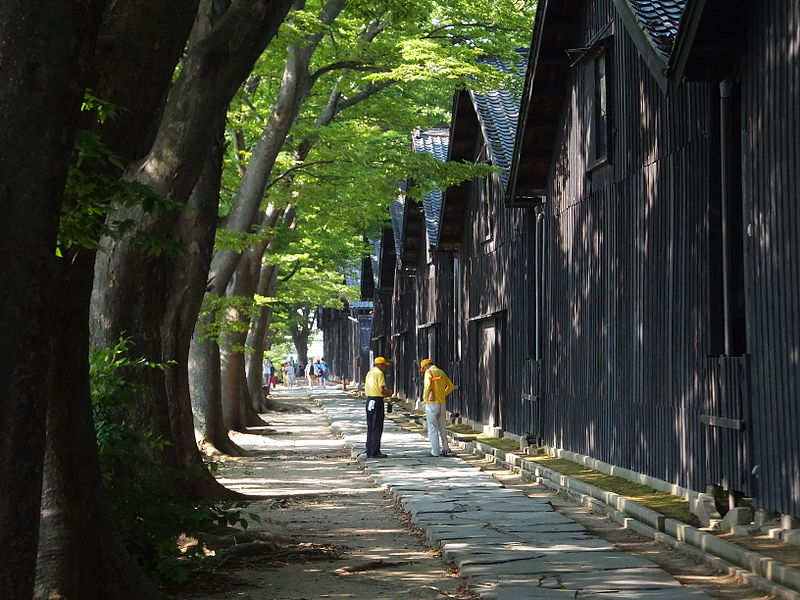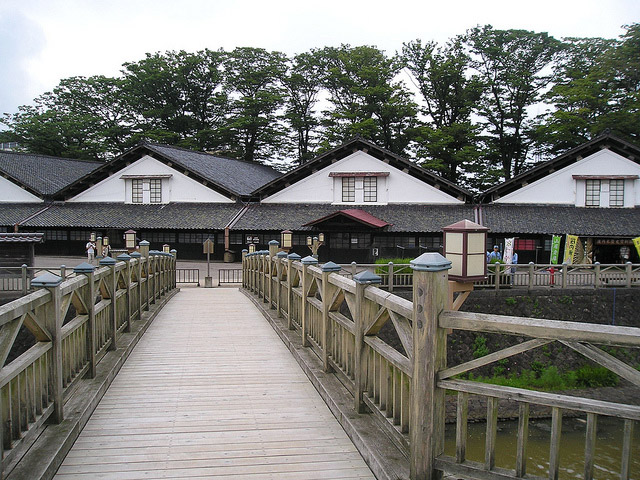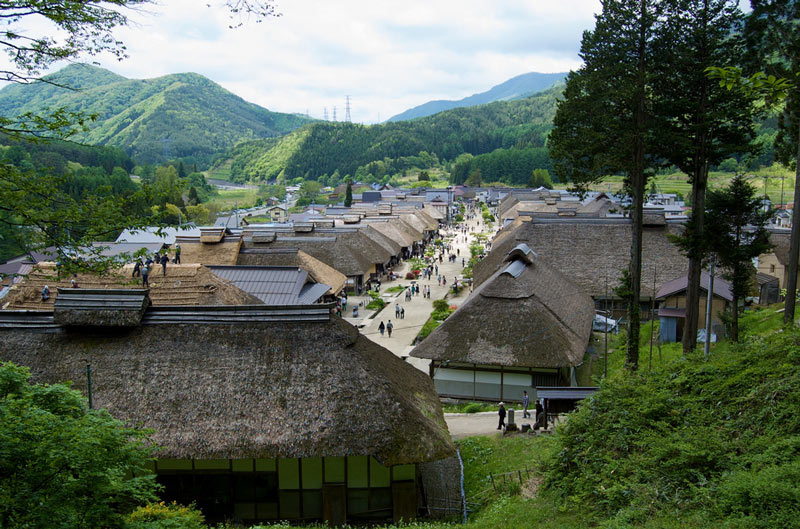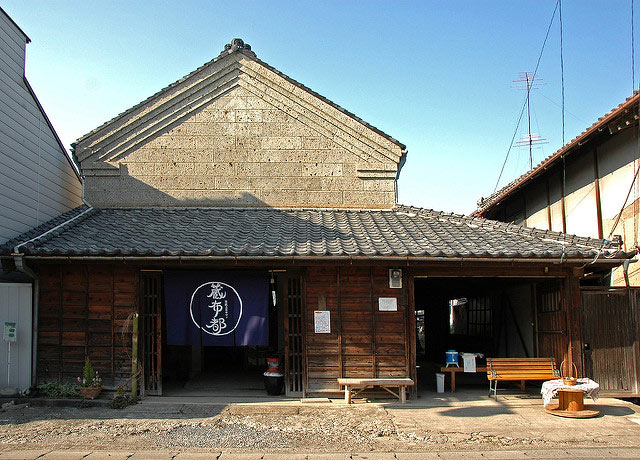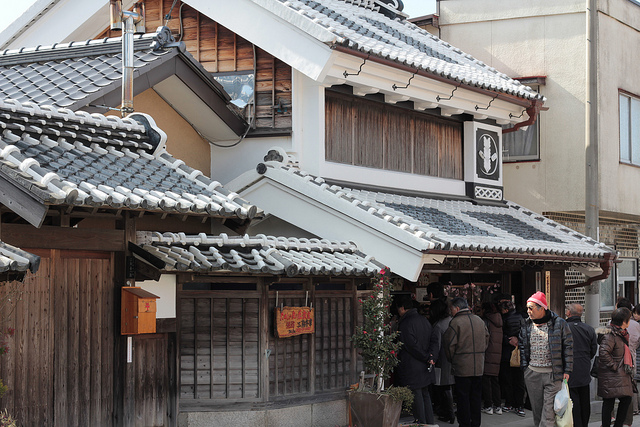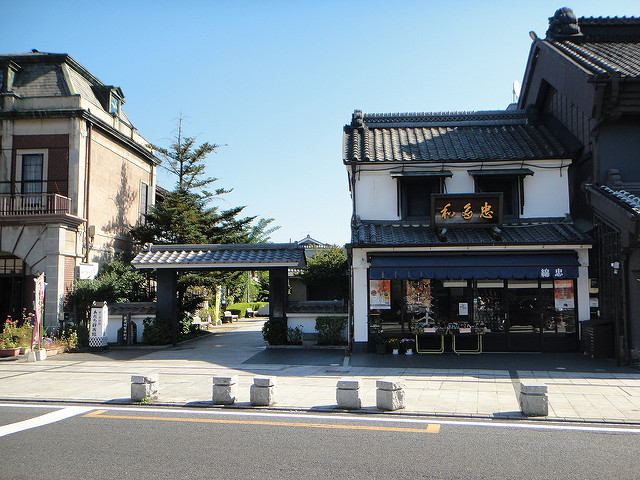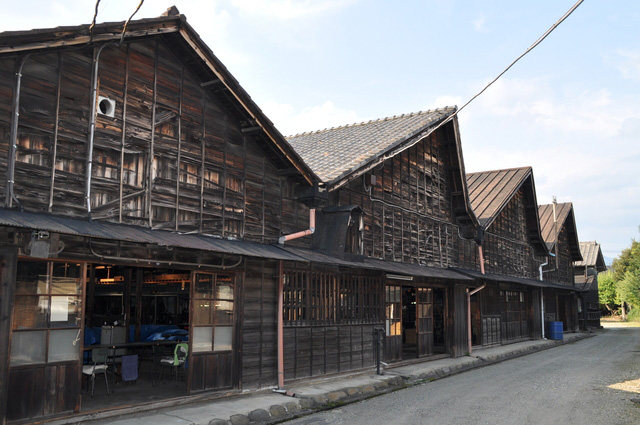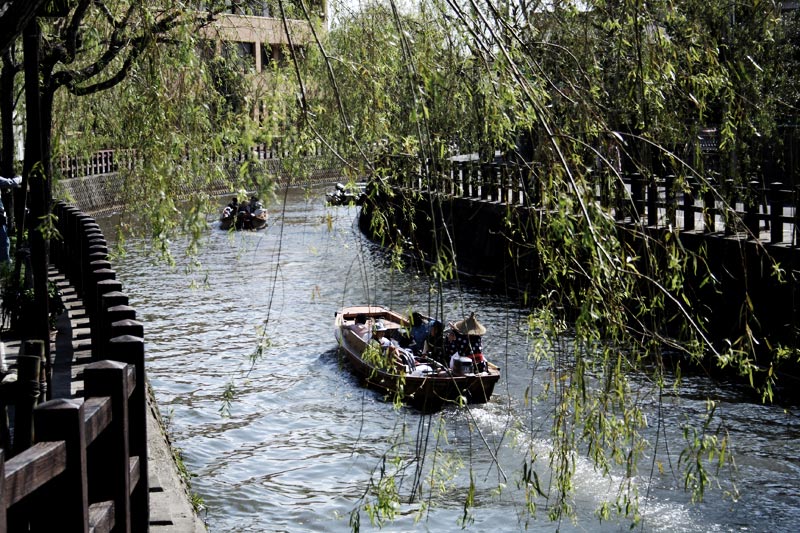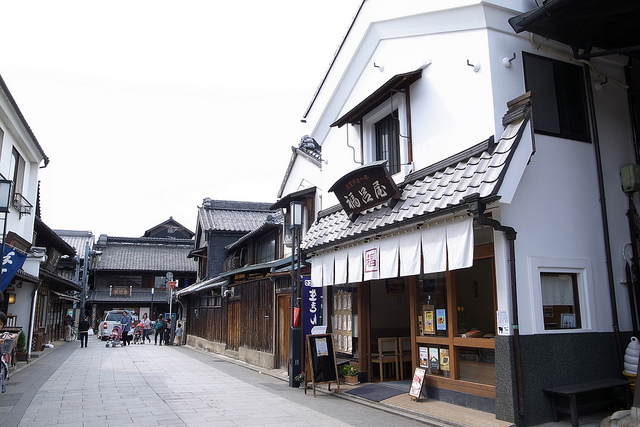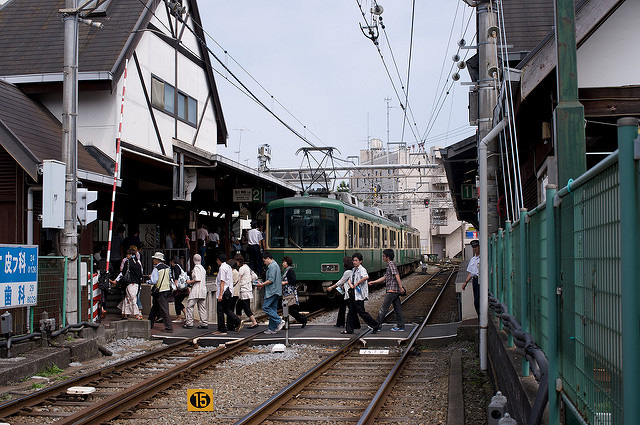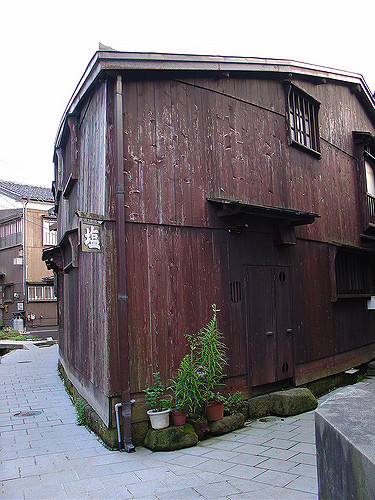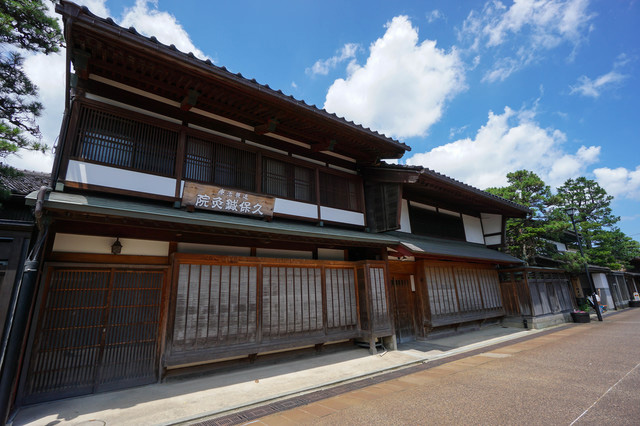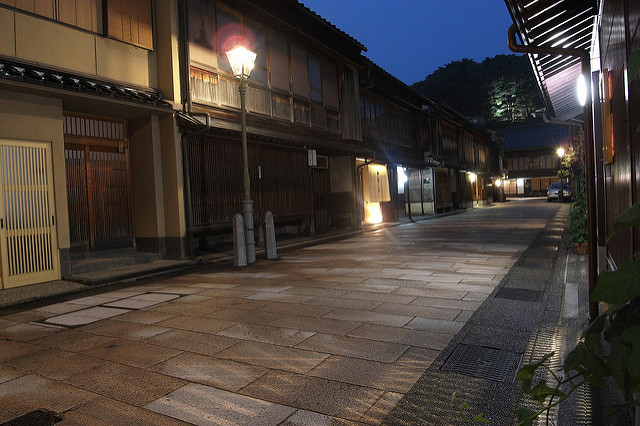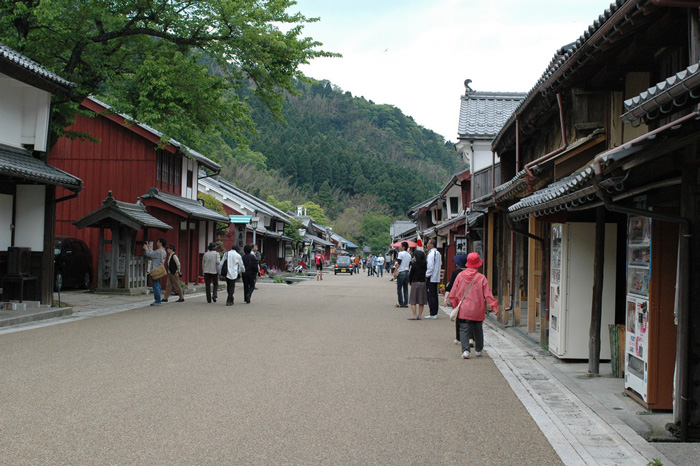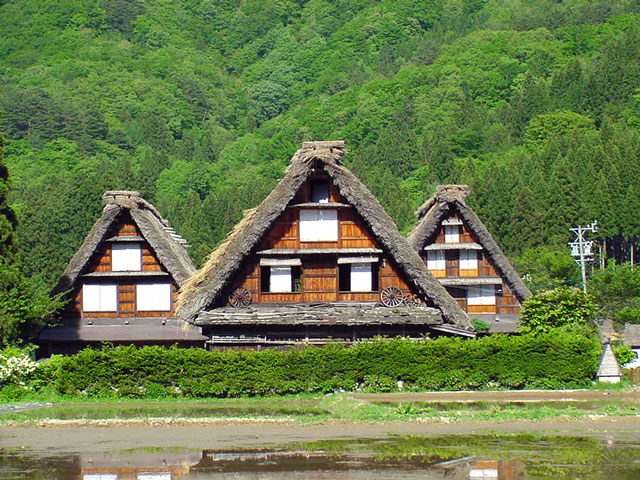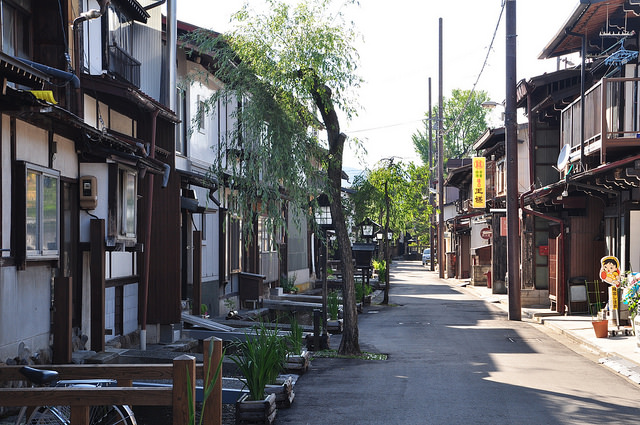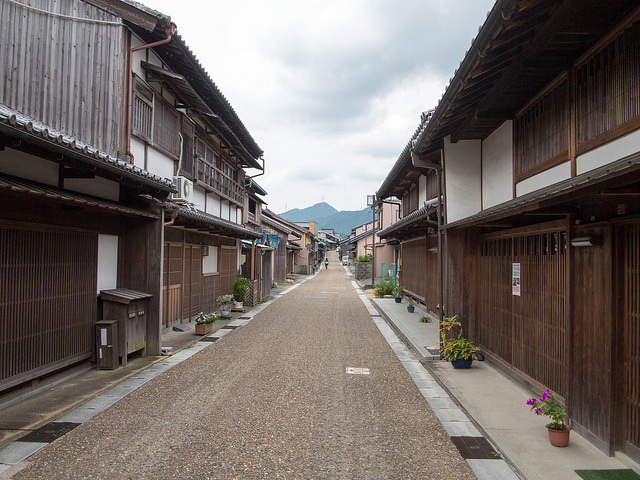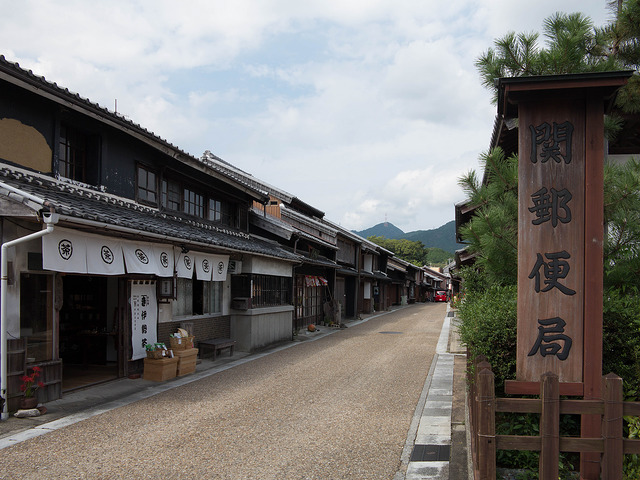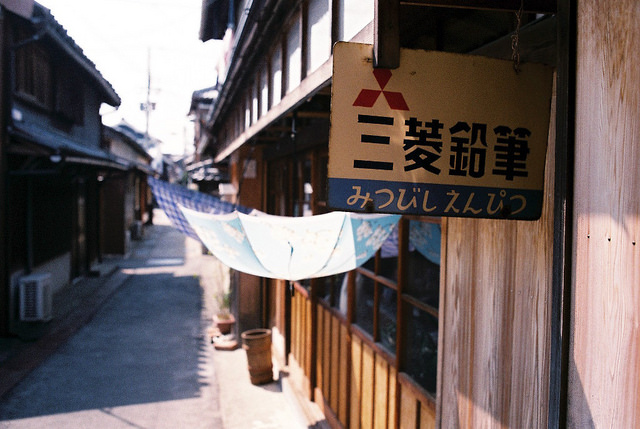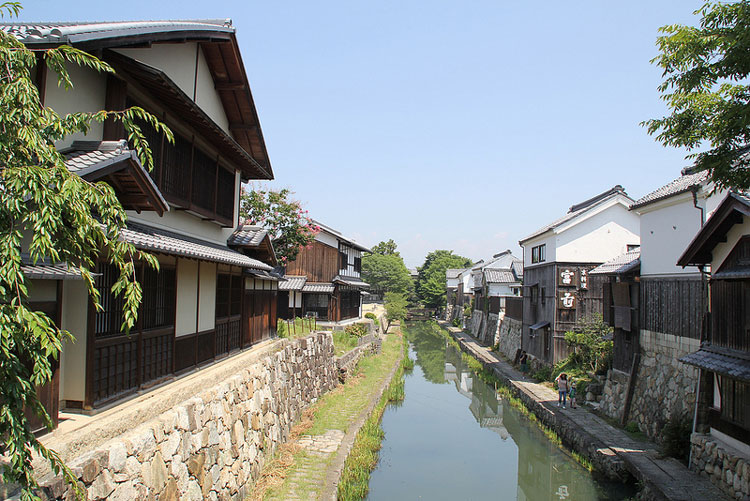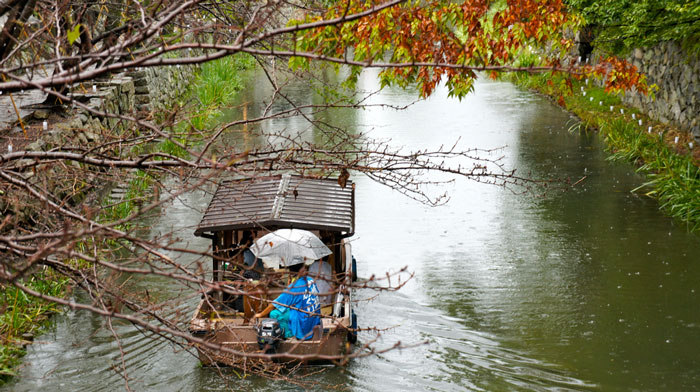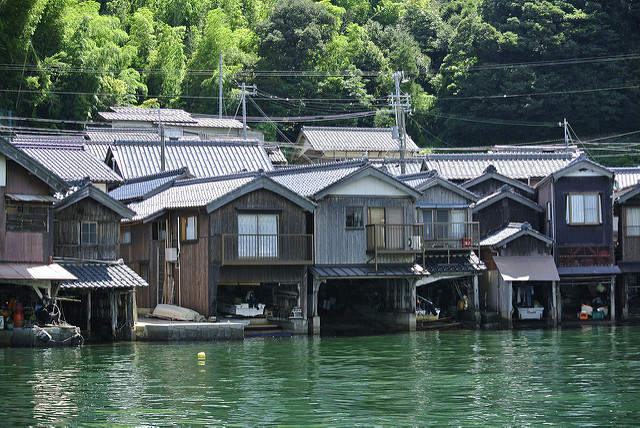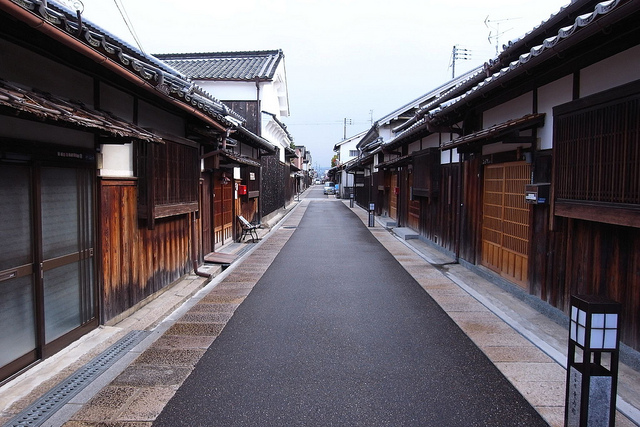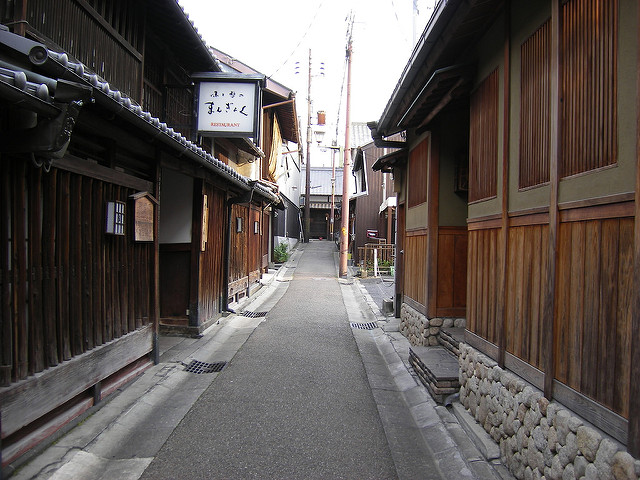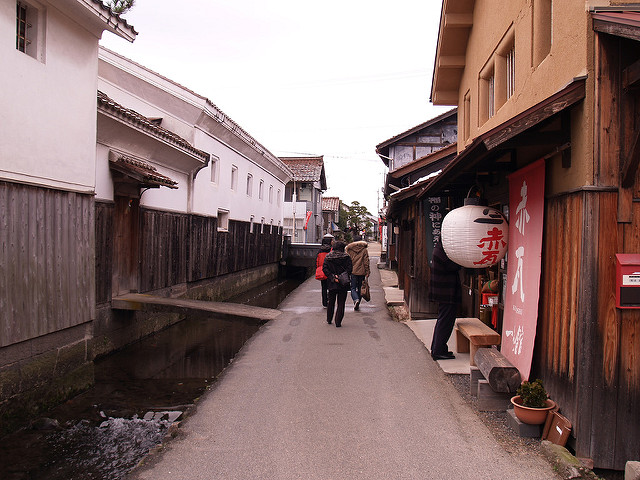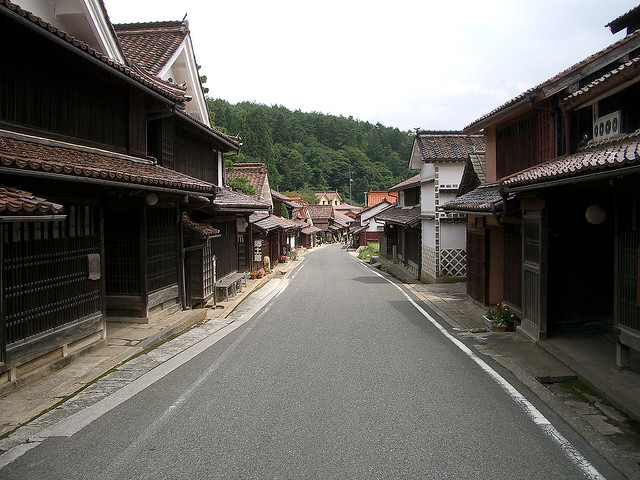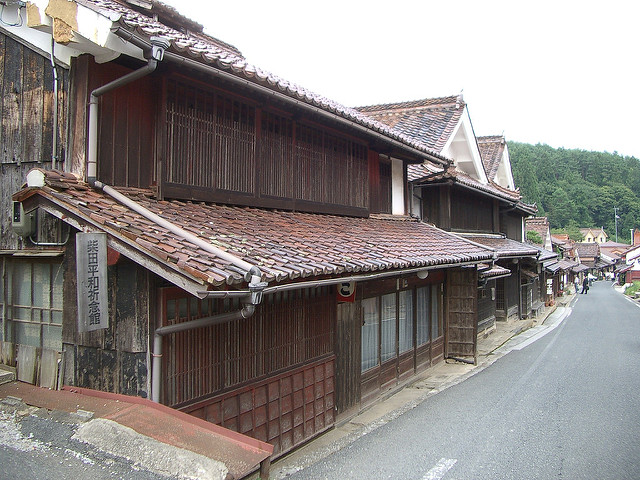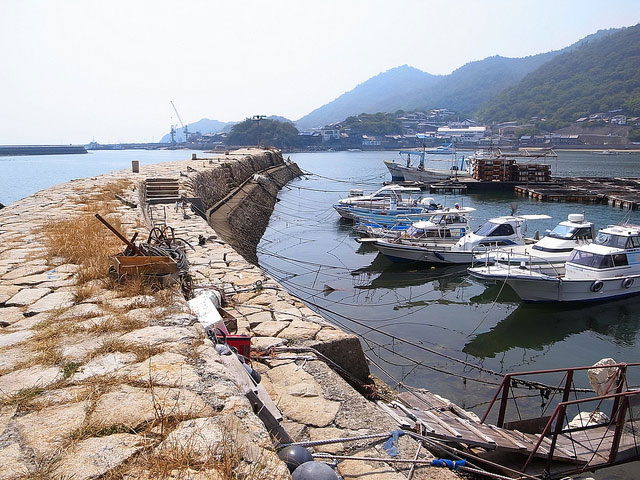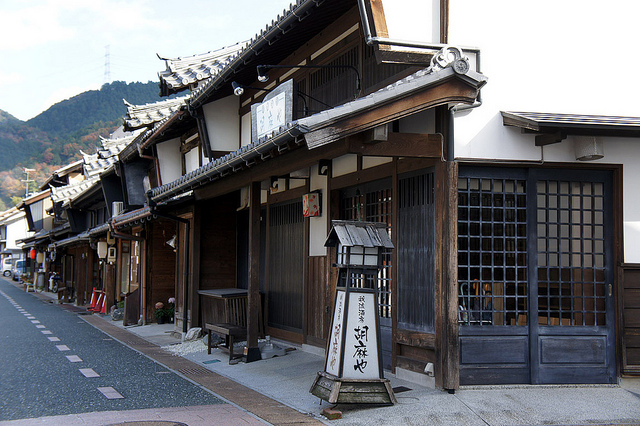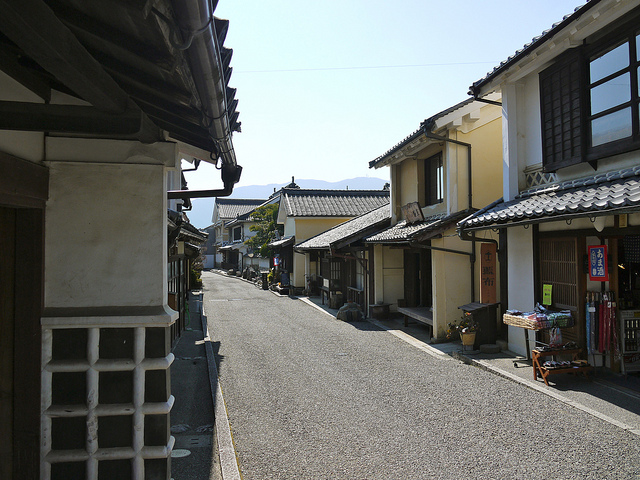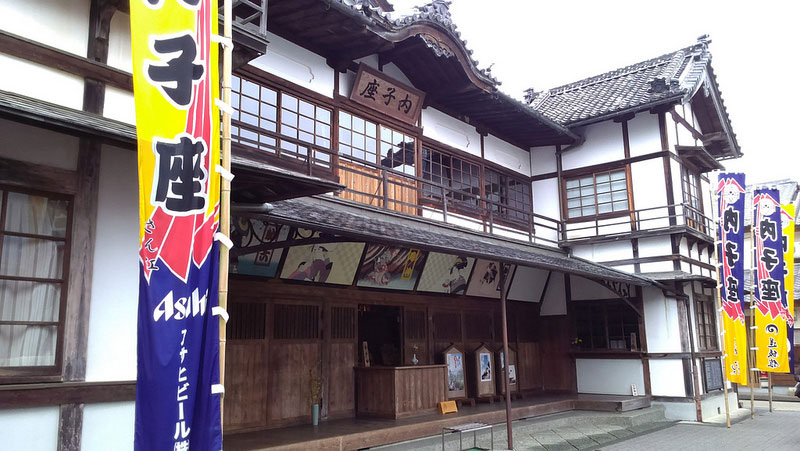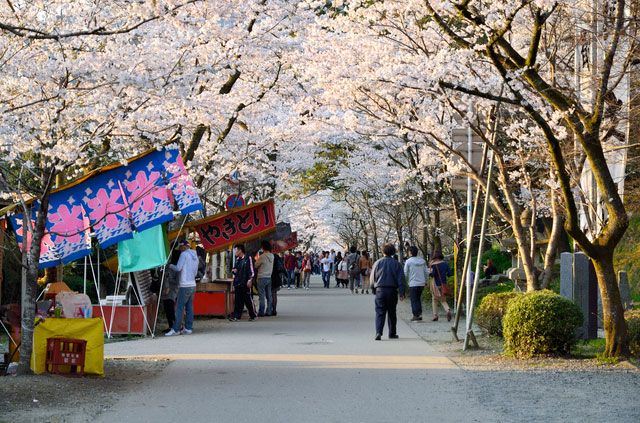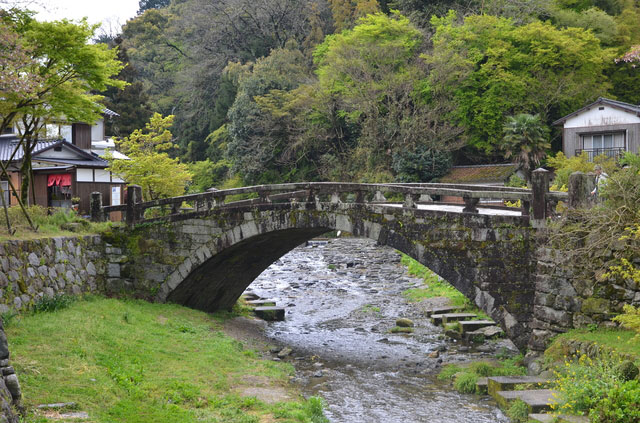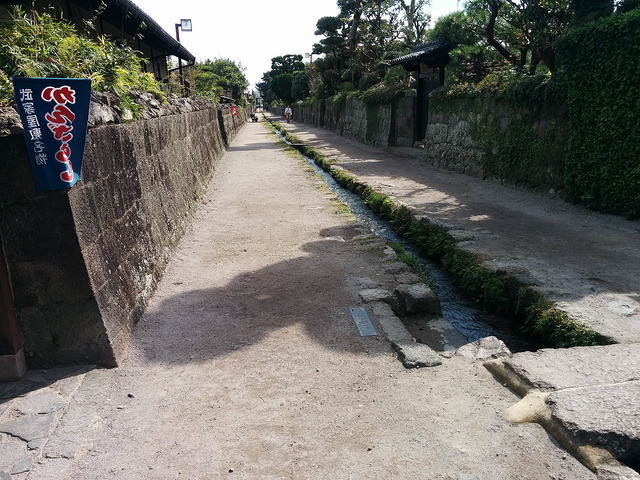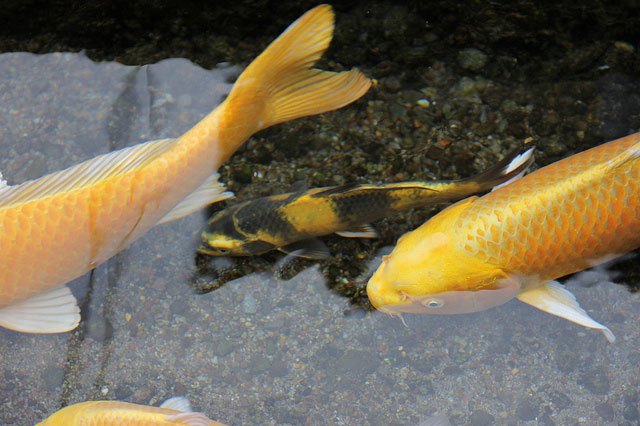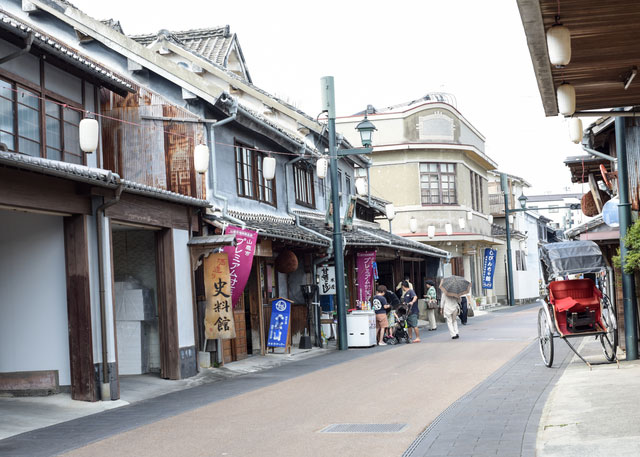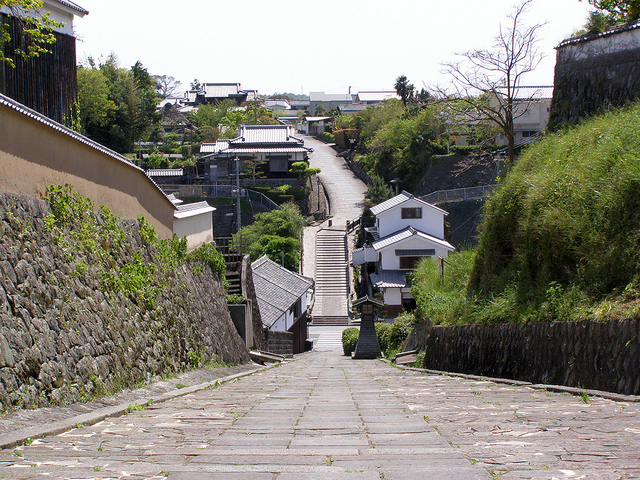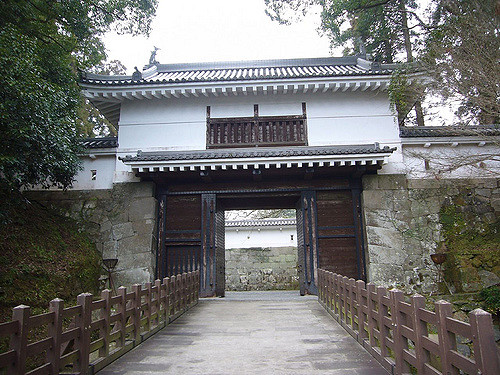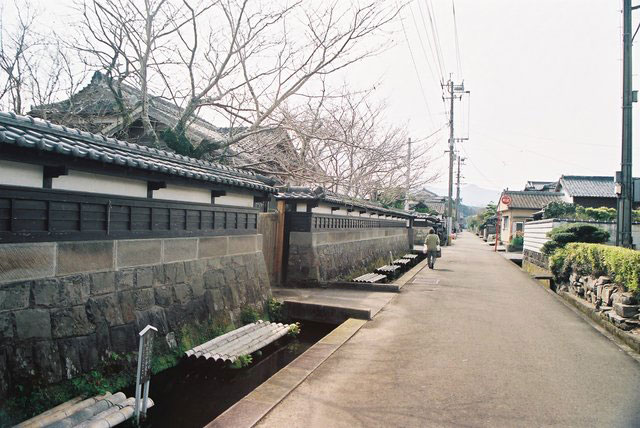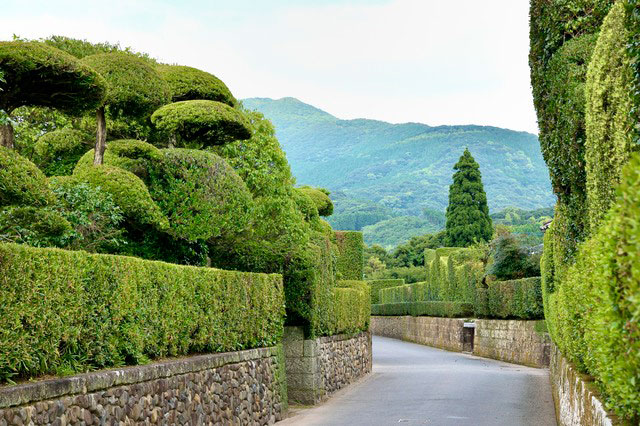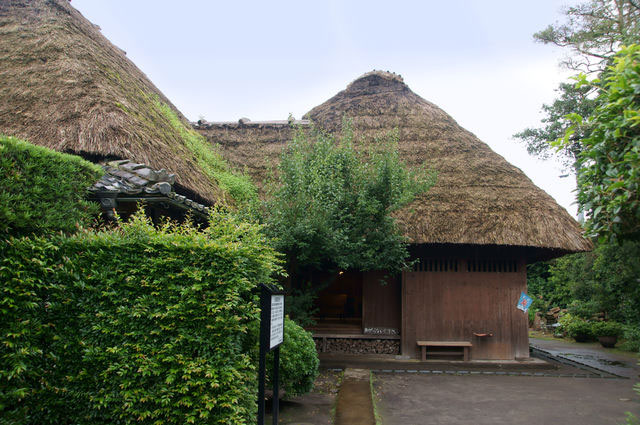
Experience the Ancient Japanese Way of Life in Each Prefecture
It is hard to find old towns in many cities in Japan. The towns and districts listed below survived natural disasters, fires, and/or redevelopment over the centuries in some part by luck and in part by the effort of residents. If you are interested in enjoying a historical atmosphere, why don’t you add these places to your itinerary?
This post may contain affiliate links. If you buy through them, we may earn a commission at no additional cost to you.
1. Warehouses and Western-Influenced Buildings in Hakodate [Hokkaido]
Hakodate was opened to international trade in 1859 and the locals’ lives have been influenced by foreign residents since then. The Kanamori warehouses were the first commercial red brick warehouses built in 1909, which was converted to an attractive shopping area along the waterfront. Several Western-style buildings including a church and some consulates are built in the Motomachi area and you can also see the influence of Western architecture in some townhouses in the area.
HP: www.hakodate.travel/cht/ (中文)
Address: Hakodate-shi, Hokkaido (Google Map)
2. Komise Arcade Street in Kuroishi [Aomori]
Kuoishi flourished as a logistic hub located almost in the middle of the main road between Akita and Hokkaido. Komise, a wooden arcade, was constructed by merchants along the main street in Nakamachi to provide shelter for their customers from heavy snowfalls in winter. The current buildings remain as they were in the 18th century and retain a traditional touch. The Takahashi residence, one of the merchant’s houses, has been converted to a nice cafe. This is an 8 minute-walk from Kuroishi Station on the Konan Railway.
HP: kuroishi.or.jp (Japanese Only)
Address: Nakamachi, Kuroishi-shim Aomori (Google Map)
3. Tono Furusato Village [Iwate]
This village is not an actual town but a place where traditional houses of the area dating back to the 18th to 19th centuries have been reconstructed together in a rural environment. The houses in Iwate in this period were built in an L shape because they were residential areas with stables attached. They offer many hands-on activities and seasonal events held in the houses through which you can experience the real lives of local people.
HP: www.tonojikan.jp/Several_languages/english/kanko/shisetu/furusatomura.html
Address: Kamitsukimoushi, Tsukimoushi-cho, Tono-shi, Iwate (Google Map)
4. Samurai Residences in Kakunodate [Akita]
Kakunodate, a former castle town, is a popular tourist destination especially in spring for its beautiful cherry blossom trees in the samurai residence area. This place is actually beautiful all year round as it's snow white in winter, green in the summer, and tinted with fiery colors in the autumn. The samurai residences built in 1620 are preserved well and they still have residents. Some of them are open to the public.
HP: kakunodate-kanko.jp/language/en/
HP: kakunodate-kanko.jp/image/language/kakunodate_map_cn2.pdf (中文)
Address: Higashi-Katsurakucho, Kakunodate-machi, Senboku-shi, Akita (Google Map)
5. Old Town, Toyoma [Miyagi]
Toyoma once prospered as a center of commerce in the northern Miyagi region. In addition to the samurai residences and the warehouse-style old shops from the 18th century, there is a former elementary school and a police station built in a 19th century Western style. The latter two are open to the public exhibiting the way of life in the period.
HP: www.tome-city.com/rekisi/ (Japanese Only)
Address: Toyoma-machi, Tome-shi, Miyagi (Google Map)
6. Sankyo Storehouses in Sakata [Yamagata]
Sakata flourished as a rice shipping port during the Edo period as Yamagata has long been known as one of the best rice production areas in Japan. Sankyo Soko was built to store rice in 1893. 9 warehouses are protected by 36 zelkova trees from the sun in order to to avoid rising temperatures and the roofs are doubled to help adjust the humidity. Now the storehouses are converted to museums and tourism spots. The zelkova lined street is very nice to walk down.
HP: data.yamagatakanko.com/english/sightseeing/sakata.html
HP: data.yamagatakanko.com/tcn/ (中文)
Address: 1-1-20 Sankyo-machi, Sakata-shi, Yamagata (Google Map)
7. Ouchijuku, Post Town [Fukushima]
Ouchi-juku is a former post town on the road connecting Aizu and Nikko. While it's located in a mountainous area, houses with thatched roofs are lined up along the road and are surrounded by paddy fields. Most of the buildings are used as souvenir shops and restaurants. You can enjoy the nostalgic atmosphere of the old post town without the eyesore of electric wires and poles.
HP: ouchi-juku.com/index.php?English
Address: Ouchi, Shimogomachi, Minami Aizu-gun, Fukushima (Google Map)
8. Makabe, Old Town [Ibaraki]
Makabe's city plan is based on the traditional Edo period castle town. The town is dotted with over 100 historical buildings from each period, like warehouse-style shops built between the 19th to early 20th centuries and townhouses built in the mid-20th century. March can be a good time to visit when hina-dolls are displayed to the public at many townhouses for Girls' Day. This town has been under reconstruction after the Great East Japan Earthquake in 2011.
HP: www.kankou-sakuragawa.jp/page/dir000101.html (Japanese Only)
Address: Makabe, Sakuragawa-shi, Tochigi (Google Map)
9. Warehouse District in Tochigi [Tochigi]
The city of Tochigi thrived with trade thanks to Edo (Tokyo) utilizing the Uzuma River. There are many old warehouses along the street called ‘Kuranomachi-dori’ and the Uzuma River. The town is dotted with historical buildings built between the 18th to 20th centuries, and some of them are used as shops or cafes. This town is a nice place to enjoy a historical atmosphere.
HP: travel.tochigiji.or.jp/en/
HP: travel.tochigiji.or.jp/zh_TW/ (中文)
Address: Tochigi-shi, Tochigi (Google Map)
10. Kiryu, Industrial District [Gunma]
PIXTA
Kiryu’s main industry has been silk textile manufacturing over 1300 years and the town is still dotted with approximately 260 factories with saw-tooth roofs built after the 19th century, though most of them are no longer operating. A saw-tooth roof is designed to provide uniform natural light through north-facing windows, since light is essential to textile manufacturing. Another attraction is the main building of Kiryu Tenmangu Shrine with magnificent decorations which show the industrious prosperity the town boasted.
HP: www.visitgunma.jp/en/sightseeing/area6.php
Address: Kiryu-shi, Gunma (Google Map)
11. Sawara, Riverside District [Chiba]
Sawara, 30 minutes from JR Narita Station, flourished during the Edo period as the center of rice shipping to Edo (Tokyo). Historical buildings lined up along the canal on both sides include several still-operating shops built in the 19th century. Tourists can enjoy boat tours through the canal. If you are lucky and visit Sawara in June when irises are in bloom, you might have a chance to witness a traditional wedding ceremony of the area.
HP: www.suigo-sawara.ne.jp/ (Japanese Only)
Address: Sawara, Katori-shi, Chiba (Google Map)
12. Kawagoe, Castle Town [Saitama]
Kawagoe thrived as a resource supplier to Edo in the past. Kawagoe merchants were so wealthy that they built more than 200 stores in a warehouse-style lined along the street in the 19th century. The warehouse-style of building is fire-proof and costs more to build than a simple wooden building. Thanks to the locals' effort to preserve the townscape, we can still enjoy the good old days of the town.
HP: www.koedo.or.jp/foreign/english/
HP: www.koedo.or.jp/foreign/chinese_tr/ (中文)
Address: Motomachi, Kawagoe-shi, Saitama (Google Map)
13. Yanesen, Shitamachi Distict [Tokyo]
Yanesen is the shortened form of the three towns’ name: Yanaka, Nezu and Sendagi. These areas were saved from bombings in WWII and redevelopment activities despite their location in the center of Tokyo. Some buildings are 100 to 300 years old. You can see good examples of the workers' way of life in the beginning of the 20th century by strolling around Yanesen area.
HP: www.gotokyo.org/en/tourists/guideservice/modelcourse/004.html
HP: www.gotokyo.org/tc/tourists/guideservice/modelcourse/004.html (中文)
Address: Taito-ku, Tokyo (Google Map)
14. Townscape with Enoden [Kanagawa]
Few historical districts can be found in Kanagawa, even though many historical architecture remains. However, the landscape along the Enoden railroad hasn't changed much since its opening in 1902. The train still runs through residential areas between Koshigoe and Enoshima stations and the façades of some houses face the narrow railroad. This style of building is now banned under modern regulations. Seeing the natural landscape through the train window is interesting as well.
HP: www.enoden.co.jp/flangu/e1top.htm
HP: www.enoden.co.jp/flangu/c1top.htm (中文)
Address: Kamakura-shi, Kanagawa (Google Map)
15. Sukunegi, Port Town [Niigata]
Shukunegi is located at the south end of Sado Island. The village developed as a port of call serving Kitamaebune and made a fortune between the 17th and early 20th centuries. 106 two-storied houses crowd together in a small area like a maze. You can feel you're back in the past when you stand in the stone-paved narrow alley. The structures of the houses are unique as they were built by ship carpenters, while the interiors of these simple-looking houses are pretty luxurious. You can visit the restored wooden cargo ship called sengokubune.
HP: www.visitsado.com/taiwan/taiwan-welcome.html (中文)
Address: Shukunegi, Ogi-machi, Sado-gun, Niigata (Google Map)
16. Iwase, Port Town [Toyama]
PIXTA
Iwase was a thriving trading port serving Kitamaebune cargo ships from the 17th to early 20th centuries. Wholesalers made a fortune through trading, and their luxurious residences still remain in the district.
HP: foreign.info-toyama.com/en/spot/?spot_id=65&ret_list_p=6
HP: foreign.info-toyama.com/tw/ (中文)
Address: Iwase Higashi-machi, Toyama-shi, Toyama (Google Map)
17. Chayagai in Kanazawa [Ishikawa]
Kanazawa had been a prosperous castle town governed by powerful feudal lords during the Edo period. Three chayagai remain in the town because they were so rich. A chaya is a special type of entertainment facility where guests are entertained by geisha, and gai means town. The architectures are designed uniquely. Walking around at night is recommended since that's they look best, though many shops in the area are closed after sunset.
HP: www.kanazawa-tourism.com.tw (中文)
Address: Kanazawa-shi, Ishikawa (Google Map)
18. Kumagawa-juku, Post Town [Fukui]
Kumagawa-juku, dating back to the late 16th century, was a post town on the Wakasa highway connecting Wakasa Bay and Kyoto. The road is better known as ‘Mackerel Highway’ since mackerel caught in Wakasa Bay were loved by people in Kyoto and many mackerel were transported through it. Many of the historical buildings have been converted to cafes or souvenir shops. With no electric wires along the street, we can fully enjoy the historic atmosphere of the Edo period.
HP: www.town.fukui-wakasa.lg.jp/kankou/english/index.html
HP: www.town.fukui-wakasa.lg.jp/kankou/traditional/index.html (中文)
Address: Kumagawa, Wakasa-cho, Mikata Kaminaka-gun, Fukui (Google Map)
19. Akasawa-juku, Post Town [Yamanashi]
Akasawa-juku is located on the steep slope of a mountain in the southern portion of Yamanashi. This post town developed in the Edo period to accommodate visitors to the sacred mountain nearby. The number of inns decreased from 9 to 1 after the construction of a direct roadway to the starting point of the trail. This beautiful small village offers a nice harmonious landscape of a traditional residential area and nature, though it’s not easy to access.
HP: www.yamanashi-kankou.jp/english/index.html
HP: www.yamanashi-kankou.jp/chinese_t/index.html (中文)
Address: Akasawa, Hayakawa-cho, Minamikoma-gun, Yamanashi (Google Map)
20. Kisoji, Post Towns of the Nakasendo [Kisoji]
Kisoji is part of the Nakasendo highway which connected Edo and Kyoto after the 17th century. As the road ran through deep valleys and most people traveled on foot, post towns called shuku developed every few kilometers to provide accommodations and other kind of services for travelers. Some of these post towns still remain in good condition. Narai-juku, Tsumago-juku, and Magome-juku are particularly popular among tourists for their picturesque townscapes.
HP: www.kisoji.com/english/index.html
HP: www.kisoji.com/tw/index.html (中文)
Address: Nagano (Google Map)
21. Shirakawa-go & Store houses in Hida Furukawa [Gifu]
PIXTA
There are many attractive old towns and villages in Gifu. One of the most famous areas is Shirakawa-go where a good number of old farmhouses is well preserved. These big houses with steep thatched roofs are indigenous to the region thanks to the heavy snowfall in winter. The upper floors were used to rear silkworms.
Address: Shirakawa-mura, Ono-gun, Gifu (Google Map)
22. Warehouses with Namako wall in Matsuzaki [Shizuoka]
HP: izumatsuzakinet.com (Japanese Only)
Address: Matsuzaki-cho, Kamo-gun, Shizuoka (Google Map)
23. Pottery Town, Tokoname [Aichi]
Tokoname is one of the oldest and biggest ceramic industrial areas in Japan dating back to the 12th century. Pottery workshops with brick chimneys and small galleries are dotted alongside narrow decorated streets. It’s a nice walk. Tokoname is easily accessible from both Centrair and Nagoya Stations on the Meitetsu line.
HP: www.tokoname-kankou.net/english/
HP: www.tokoname-kankou.net/taiwan/ (中文)
Address: Tokoname-shi, Aichi (Google Map)
24. Sekijuku, Post Town of the Tokaido [Mie]
Sekijuku was a major post town during the Edo period as three major roads intersected here: the Tokaido connecting Kyoto to Edo, Isebetsu Kaido used by pilgrims to the Ise Grand Shrine, and Yamato Kaido connected to the Nara region. More than 200 townhouses built between the 18th to 19th centuries are preserved in Sekijuku even though it is hard to find vestiges of Tokaido’s other post towns.
HP: tourismmiejapan.com/search/spot.php?act=dtl&id=28
HP: tourismmiejapan.tw/ (中文)
Address: Sekicho, Kameyama-shi,Mie (Google Map)
25. Merchant District in Yuasa [Wakayama]
Yuasa is said to be the birthplace of soy sauce in Japan. Soy sauce and Kinzanji miso are still brewed in the traditional way, meaning there are no big modernized factories in the area. The river behind factories were utilized to ship their products. Most old soy sauce and miso factories dating back to around the 18th century are still used even today.
HP: www.wakayama-kanko.or.jp/world/english/things/history/list01/detail017.html
HP: www.wakayama-kanko.or.jp/world/chinese_t/index.html (中文)
Address: Yuasa-cho, Arita-gun, Wakayama (Google Map)
26. Lakeside District in Omihachiman [Shiga]
Omihachiman, close to Lake Biwa, was the base of Omishonin, successive itinerant peddlers. The city plan was based on the castle town in the 16th century and the Hachimanbori canal linked with Lake Biwa, 4750m long in total, stimulated its economic development. The houses were built in the merchant house-style with the warehouses facing the canal. You can enjoy the beautiful landscape with houseboats cruising through the waterways.
HP: www.omi8.com (Japanese Only)
Address: Omihachiman-shi, Shiga (Google Map)
27. Fishermen's Houses in Ine [Kyoto]
Ine is a small fishery town located on the Tango Peninsula, the north end of Kyoto prefecture. Approximately 230 unique boathouses, called funaya, line the 5 km coast line. The first floor is used as a dock and a workshop. A 25 minute boat tour is the best way to experience this indigenous cultural landscape. It takes around 3 hours in total by train and bus to reach Ine from Kyoto Station.
HP: www.amanohashidate.jp/lang/en/spots/funaya-fishermansboat-house/
HP: www.amanohashidate.jp/lang/chh.html (中文)
Address: Ine-cho, Yosa-gun, Kyoto (Google Map)
28. Temple Town in Tondabayashi [Osaka]
The history of Tondabayashi dates back to 1560. This town was formed as a temple town with a self-governing community and developed with flourishing business. About 40 townhouses built during the 18th to 20th centuries can be found in the small area and they'll make you feel as if you time traveled to the past. Tondabayashi is located in the southeastern part of Osaka, 50 minutes by train from Osaka Station.
HP: tondabayashi-navi.com (Japanese Only)
Address: Jinaimachi, Tondabayashi, Osaka, (Google Map)
29. Naramachi, Old Town in Nara [Nara]
Naramachi is the former merchant district located south of Nara Park and Kofukuji Temple. Traditional townhouses line narrow alleys. The façade of buildings were often made narrow to avoid taxation since taxes were calculated based on frontage size in the Edo period. Some of the buildings have been converted into shops or cafes. The lattices used for lighting and ventilation makes the townscape more nostalgic.
HP: narashikanko.or.jp/tw/ (中文)
HP: narashikanko.or.jp/naramachi/ (Japanese Only)
Address: Nara-shi, Nara (Google Map)
30. Castle Town in Sasayama [Hyogo]
The Tanba region, including Sasayama, was a strategic point of transportation in the Edo period. Sasayama, about 1 hour from Osaka by express train, was a castle town where the governing feudal lord of the region was based in. The charming merchant district allowed you to shop around local specialties. If you go up to the ruins of Sasayama Castle, you can look over the entire town. The reconstructed lord’s residence is also a good place to visit.
HP: tourism.sasayama.jp/english/
Address: Sasayama-shi, Hyogo (Google Map)
31. Old Town in Kurayoshi [Tottori]
Kurayoshi is located almost in the center of Tottori and was a castle town. This town is known for its beautiful scenery with red roofs made with sekishu gawara roof tiles and white-walled storehouses accented by black burnt cedar trim. Most of the buildings were built around the 18th to 19th centuries. The 400m area belonged to merchants and tradesmen and behind the storehouses are traditional houses.
HP: www.apionet.or.jp/kankou/f/e/
HP: www.apionet.or.jp/kankou/f/t/ (中文)
Address: Kurayoshi-shi, Tottori (Google Map)
32. Townscape in Fukiya [Okayama]
Fukiya is located northwest of the city of Okayama and was developed as a copper mine. They made a fortune as they were the only place of production of the expensive bengara red iron oxide needed for roof tiles. Red is the color representative of the town; the roof tiles are red, and many walls and wooden parts of the buildings are painted bengara red. You can enjoy the beautiful, well-preserved Edo-style houses here.
HP: okayama-japan.jp/en/town/town-bicchu/#144
HP: okayama-japan.jp/tw/town/town-bicyu/632.html (中文)
Address: Nariyacho Fukiya, Takaha-shi, Okayama (Google Map)
33. Omori Ginzan [Shimane]
Omori was the center of Iwami Ginzan, the biggest silver mine in Japan. The over 3 km long street is lined with old buildings. Most of them were built after the great fire in 1800. The feature of the area is sekishu gawara, the red roof tiles using a glaze produced in the Izumo area. There are manmade caves in which 501 Gohyakurakan statues of Buddha’s disciples are housed as an offering by the people who worked in silver mines.
HP: ginzan.city.ohda.lg.jp/wh/en/index.html
HP: ginzan.city.ohda.lg.jp/wh/ch/index.html (中文)
Address: Omori-cho, Oda-shi, Shimane (Google Map)
34. Tomo-no-ura, Port Town [Hiroshima]
Tomo-no-ura is a port town facing the Seto Inland Sea, where many small ships would dock while waiting for a favorable tide. The history of the port dates back at least to the 8th century. This town is known not only for photogenic alleys and port facilities from the Edo period, but also the city plan from the later Edo period. You can use the town map from the 18th century to get around today as most of the streets still exist.
Address: Tomo, Fukuyama-shi, Hiroshima (Google Map)
35. Castle Town in Hagi [Yamaguchi]
Hagi is known for its well-preserved former castle town and Higiyaki pottery. The area had been governed by one family for over 250 years and was lucky not to experience major disasters since the 17th century so we can explore the town as it used to be. Samurai residences of various ranks from low to executive can be seen.
HP: www.hagishi.com/panf/top_en.pdf
HP: www.hagishi.com/panf/top_tw.pdf (中文)
Address: Horiuchi, Hagi-shi, Yamaguchi (Google Map)
36. Old town in Shiwaku Honjima Island [Kagawa]
Honjima, 30 minutes by ferry from the Maugame Port, was the center of governance of the Shiwaku Islands that consist of nearly 30 small islands in the Seto Inland Sea. The island was also known as the home base of the Shiwaku Navy, some of the most highly regarded sailors, who governed the area on behalf of the shogun. Numerous residences from the 17th to 18th centuries are beautifully preserved in the Karashima district close to the sea.
HP: www.my-kagawa.jp/tw/ (中文)
Address: Shiwaku Honjima, Marugame-shi, Kagawa (Google Map)
37. Udatsu Townscape in Wakimachi [Tokushima]
Wakimachi is known for udatsu, high-winged walls between houses to prevent fire from spreading. Wakimachi had been prosperous as an indigo center since the 16th century utilizing its topography close to the Yoshino River. Udatsu walls became a symbol of wealth as rich merchants tried to make them as decorative as possible. There is a good number of merchants’ houses dating back to the 18th century along the 400m street.
HP: www.topia.ne.jp/english/tourism/sightseeing/western_tokushima/w-01.html
HP: www.topia.ne.jp/chinese1/tourism/ (中文)
Address: Wakimachi, Mima-shi, Tokushima (Google Map)
38. Uchiko-cho [Ehime]
Uchiko, 25 minutes by JR express from Matsuyama, was once a prosperous center of vegetable wax production. An old neighborhood dating back over 100 years is well-preserved along a 600m street in the Yokaichi district. The symbol of the area is the Uchiko-za theater built in 1916. You can freely explore inside, including their backyard passageways and trap doors which allow dramatic presentation in kabuki performances. A picturesque covered wooden bridge leading to Yugejinja Shrine is also worth visiting.
HP: www.we-love-uchiko.jp/ (Japanese Only)
Address: Uchiko-cho, Kita-gun, Ahime (Google Map)
39. Kiragawa, Old Town [Kochi]
Kiragawa is located 16 km northwest from Murotomisaki cape where typhoons frequently pass, so it is known an area with significantly high amounts of rainfall. This area had been prosperous as a high-quality charcoal shipping port, and the merchant houses and the warehouses utilize special techniques to protect buildings from the rain, including waterproof plaster, throating roof tiles on flat areas, and stone walls on the hillside.
HP: www.attaka.or.jp.e.qy.hp.transer.com/
HP: www.attaka.or.jp.t.qy.hp.transer.com/ (中文)
Address: Kiragawa-cho, Muroto-shi, Kochi (Google Map)
40. Castle Town in Akizuki [Fukuoka]
PIXTA
PIXTA
Akizuki is an old castle town dating back to the 14th century. This small town is a nice place to stroll around and enjoy a historic atmosphere. Sugi-no-baba, a 500m long street which was used as a riding ground, is especially beautiful in the spring thanks to its line of 200 cherry blossom trees. Meganebashi, an arched stone bridge built in 1810, is also a highlight of the area.
HP: www.city.asakura.lg.jp/www/contents/1297670522345/index.html (Japanese Only)
Address: Akizukinotori, Asakura-shi, Fukuoka (Google Map)
41. Back Streets with Tombai Walls in Arita [Saga]
The main attraction of Arita, the birthplace of Japanese porcelain, is the tombai wall. The tombai wall is made of the waste of fire resistant bricks (tombai), which was used to build a climbing kiln. Several kilns can be found in the area, some ruined and some that are still used. There are various galleries and museums where you can enjoy shopping or admiring beautiful pieces of Arita porcelain, too.
HP: www.arita.jp.e.ew.hp.transer.com/spot/post_20.html
Address: Kamikouhira, Arita-cho, Nishimatsura-gun, Saga (Google Map)
42. Castle Town in Shimabara [Nagasaki]
Shimabara is a port town on the east coast of the Shimabara Peninsula, 60 minutes by ferryboat from Kumamoto. The main characteristic of the area is the spring water used for daily life. In the samurai district, a water canal running through the street supplied drinking water. Three samurai residences which belonged to low-class samurai are open to the public for free.
HP: translate.google.co.jp/translate?hl=ja&sl=ja&tl=en&u=www.shimabaraonsen.com/index.html
HP: translate.google.co.jp/translate?hl=ja&sl=ja&tl=zh-TW&u=www.shimabaraonsen.com/index.html (中文)
Address: Shimabara-shi, Nagasaki (Google Map)
43. Yamaga, Old Town [Kumamoto]
PIXTA
Yamaga, located between Kumamoto and Kokura, prospered from its beneficial location. It was a popular post town with hot springs in the Ed -period and was a major artery of rice transportation thanks to the river. In addition to the kilometer-long street preserving the Edo period atmosphere, there are other highlights as well. The Yachiyo-za Theater opened in 1911 and the Sakua-yu bathhouse, while newly reconstructed in 2014, has a history dating back 370 years. It allows you to experience the atmosphere of old bathhouses.
HP: kumanago.jp/en/spots/detail/430000003465.html
Address: Yamaga, Yamaga-shi, Kumamoto (Google Map)
44. Castle Town in Kitsuki [Oita]
Kitsuki is located on the south of Kunisaki Peninsula and Kitsuki Castle stands close to the coast facing the Seto Inland Sea. The feature of the area is the city planning: the commercial district is sandwiched between two samurai districts on hills. You can enjoy the photogenic slopes and what’s more, you can rent kimono and stroll around taking photos in the authentic atmospheres. It takes approximately 25 minutes by JR express train from Oita to Kitsuki Station.
HP: www.kit-suki.com/common/index.php?action=story&story_id=200
HP: www.kit-suki.com/common/index.php?action=story&story_id=201 (中文)
45. Castle Town, Obi [Miyazaki]
PIXTA
Obi compacts the city plan of a castle town in an easily walkable distance. There are well-preserved samurai residences in south of the ruin of Obi-jo castle and a commercial district further away. Though only the walls of Obi Castle remain from the 16th century, six buildings including the lord’s residence are reconstructed faithfully.
HP: obijyo.com (Japanese Only)
Address: Obi, Nichinan-shi, Miyazaki (Google Map)
46. Chiran Samurai Residences [Kagoshima]
PIXTA
PIXTA
Chiran is located at the southern end of the Satsuma Peninsula in Kyushu. The preserved samurai district dating back to the 18th century consists of a 700m long street. As the Satsuma domain dominated the Ryukyu Kingdom of Okinawa since the 17th century, the style of architecture shows the Ryukyu and Chinese influences. Most of the gardens existing are built in the Japanese Karesansui style. A 500 yen entrance fee allows tourists to visit 7 beautiful gardens.
HP: www.chiran-bukeyashiki.com/publics/index/10/
HP: www.chiran-bukeyashiki.com/publics/index/11/ (中文)
Address: Chiran-machi Kori, Minamikyushu-shi, Kagoshima (Google Map)
47. Traditional Ryukyu Style Village in Taketomi Island [Okinawa]
Taketomi Island, 4km south of Ishigaki Island, is well-known for its beautifully preserved traditional Okinawan/Ryukyu style village. In this 5.42 square kilometer small island, roads are covered with white coral sand while the houses are covered with red tile roofs and enclosed with stone walls to avoid strong typhoons. The island is a popular tourist destination for its beautiful beach, too.
HP: www.painusima.com/tcn (中文)
Address: Taketomi-cho, Yaeyama-gun, Okinawa (Google Map)
You may also like:
[Japan Travel]
15 Beautiful Japanese Villages You Must Visit
47 Tourist Attractions in Japan’s 47 Prefectures
50 Magnificent Views in Japan that You Shouldn’t Miss
30 reasons to go to Japan before you die
30 Most Popular Japan Sightseeing Spots for Foreigners (2014)
20 Japanese places chosen by travelers that no one should miss (2013)
A Guide to 18 UNESCO World Heritage Sites in Japan
30 shrines and temples in Japan to get lucky charms for love
16 Must-See Flower Gardens Around Japan
12 Recommended Japanese Power Spots
30 things to experience when you come to Japan
13 Recommended spots in Japan to enjoy yourself this Halloween
10 Reasons to Visit Japan in the Autumn
20 Recommended spots to take in the autumn foliage all around Japan
16 Amazing Things to Do in Japan in the Winter
Thumbnail: PixHound / Shutterstock.com
The information in this article is accurate at the time of publication.

